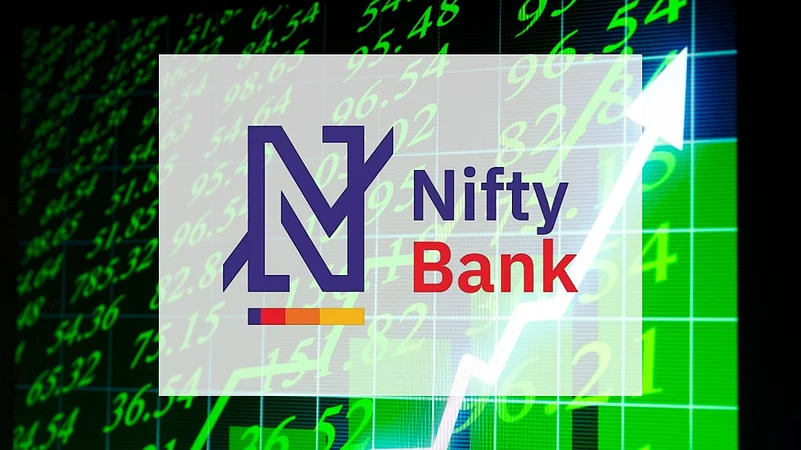Nifty Bank snapped its 4-day losing streak on Thursday, February 27 after the Reserve Bank of India (RBI) eased risk weight rules on bank loans to non-banking finance companies (NBFCs) and microfinance institutions (MFIs). Leading the index was AU Small Finance Bank, which gained over 6 per cent. Heavyweights HDFC Bank, Axis Bank and IndusInd Bank rose 0.95 per cent, 0.83 per cent and 0.62 per cent, respectively.
Among the constituents of the Nifty Financial Services index, Shriram Finance Bank gained 5.18 per cent, Cholamandalam Investment and Finance Company rose 4.92 per cent, the Bajaj twins – Bajaj Finance and Bajaj Finserv – advanced between 2-2.5 per cent. SBI Cards and Payment Services also surged between 1-2 per cent each.
CreditAccess Grameen, however, led the rally with over 12 per cent gain. During the session, the stock jumped over 19 per cent before paring initial gains. Five-Star Business Finance ended the session up by 1.68 per cent after jumping over 7 per cent. L&T Finance also gained 4.5 per cent.
Muthoot Finance ended 0.81 per cent higher after jumping over 3 per cent in the morning trade. The rally in the gold loan-focussed NBFC came after it received permission from the RBI to open 115 new branches.
The RBI on Tuesday rolled back the risk weights on bank loans to NBFCs to 100 per cent from 125 per cent. The central bank also lowered risk weight requirements for loans extended by banks to MFIs to 75 per cent from 125 per cent. It has also set the risk weight at 100 per cent for MFI consumption loans.
During a media briefing on February 7, the RBI Governor and Deputy Governor had clarified in response to a media query that the central bank is unlikely to relax risk weights on NBFC loans due to interconnected risks. However, in a major relief for lenders, the RBI later decided to ease risk weights on bank loans to NBFCs.
“This possibly happened after the governor recently met CEOs of NBFCs and banks. The NBFCs would have asked for this relaxation. The RBI under the new Governor is adopting a more consultative approach than earlier,” Nuvama Institutional Equities said in a recent report.
What Is Risk Weight?
When a lender sanctions loans, they earn some interest on them, and this acts as one of the main investments of a bank or financial institution. However, certain risks are associated if the borrower fails to pay the outstanding amount. Therefore, the banks have to keep an amount aside to face loan defaults and tackle such situations.
The higher the risk of a loan, the greater the risk weight. Conversely, loans with lower risk have lower risk weights.
This system helps ensure that banks maintain enough capital to absorb losses if borrowers fail to repay, helping to stabilise the financial system.
What It Means For Investors
According to Nuvama, the rollback in risk weights for MFIs will benefit banks with significant MFI exposure, but not Small Finance Banks (SFBs), as only AU SFB had raised risk weights on MFI loans to 125 per cent, and it applied this only to 20 per cent of its MFI consumption loans. Other SFBs did not hike risk weights.
Banks that had hiked risk weights include Bandhan Bank, RBL, IDFC First and IndusInd Bank, said the brokerage firm, adding that these banks shall see improvement in their Capital Adequacy Ratio (CAR), with Bandhan Bank and RBL likely benefiting the most.
Nuvama further said, banks with high exposure to NBFCs, such as IDFC First, ICICI, and Bank of Baroda, will benefit from the lower risk weight on NBFC loans, leading to a reduced cost of funding (CoF) for NBFCs, especially those relying heavily on bank borrowings.
“After very tight regulations in the last 1.5 years, the RBI is easing norms, which is positive for the sector. Given deteriorating asset quality in a few segments, banks are unlikely to chase aggressive growth in mid-sized NBFC and MFIs but RBI’s easing stance will be positive for loan growth when the environment stabilises and system liquidity improves,” the firm said.













